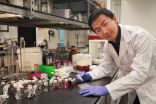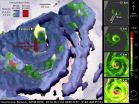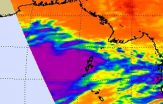Timing of epidural is up to the mother
2014-10-09
When a woman is in labour, the appropriate time to give an epidural during childbirth is when she asks for it, a new study suggests. Published in The Cochrane Library, the systematic review compared early and late epidurals during labour and found that they had very similar effects.
An epidural is a pain relieving local anaesthetic that is given as an injection into the spine. It is commonly offered to women in labour who request pain relief and is effective in reducing pain. However, previous studies have suggested that the timing of an epidural can prolong the duration ...
Women who eat fried food regularly before conceiving are at increased risk of developing gestational diabetes during pregnancy
2014-10-09
New research published in Diabetologia (the journal of the European Association for the Study of Diabetes) shows that women who eat fried food regularly before conceiving are at increased risk of developing gestational diabetes during pregnancy. The research is led by Drs Cuilin Zhang and Wei Bao, Eunice Kennedy Shriver National Institute of Child Health and Human Development (NICHD, part of the US National Institutes of Health) Rockville, MD, USA, and colleagues.
Gestational diabetes (GDM) is a complication that can arise during pregnancy, and is characterised by abnormally ...
Online intervention tool for physician trainees may improve care of substance users
2014-10-09
Online learning interventions and small group debriefings can improve medical residents' attitudes and communication skills toward patients with substance use disorders, and may result in improved care for these patients, according to a new study from the Perelman School of Medicine at the University of Pennsylvania and Drexel University College of Medicine published online in Academic Medicine.
The study used a novel internet-based learning module designed to improve the communication skills of primary care physicians during screenings and brief counseling sessions with ...
New gene therapy for 'bubble boy' disease appears effective, safe, study in NEJM reports
2014-10-09
BOSTON (October 9, 2014) –A new form of gene therapy for boys with X-linked severe combined immunodeficiency syndrome (SCID-X1), a life-threatening condition also known as "bubble boy" disease, appears to be both effective and safe, according to a collaborative research team from Dana-Farber/Boston Children's Cancer and Blood Disorders Center and other institutions conducting an international clinical trial. Early data suggest that the therapy may avoid the late-developing leukemia seen in a quarter of SCID-X1 patients in pioneering gene therapy trials in Europe more ...
Novel protein in heart muscle linked to cardiac short-circuiting and sudden cardiac deaths
2014-10-09
NEW YORK, NY – Cardiovascular scientists at NYU Langone Medical Center have identified in mouse models a protein known as Pcp4 as a regulator of the heart's rhythm. Additionally, when the Pcp4 gene is disrupted, it can cause ventricular arrhythmias.
Results from this animal study were released online Oct. 8 in the peer-reviewed publication, The Journal of Clinical Investigation.
"This study demonstrates that Purkinje cell protein-4 (Pcp4) is not only important in maintaining the heart's normal rhythmic behavior, but that when Pcp4 expression is reduced, it short-circuits ...
Patient's dramatic response and resistance to cancer drug traced to unsuspected mutations
2014-10-09
BOSTON – The DNA of a woman whose lethal thyroid cancer unexpectedly "melted away" for 18 months has revealed new mechanisms of cancer response and resistance to the drug everolimus, said researchers from Dana-Farber Cancer Institute and the Broad Institute of MIT and Harvard.
The investigators discovered two previously unknown mutations in the cancer's DNA. One made the woman's cancer extraordinarily sensitive to everolimus, accounting for the remarkably long-lasting response. The second mutation was found in the DNA of her tumor after it had evolved resistance ...
Gene therapy shows promise for severe combined immunodeficiency
2014-10-09
WHAT:
Researchers have found that gene therapy using a modified delivery system, or vector, can restore the immune systems of children with X-linked severe combined immunodeficiency (SCID-X1), a rare, life-threatening inherited condition that primarily affects boys. Previous efforts to treat SCID-X1 with gene therapy were initially successful, but approximately one-quarter of the children developed leukemia two to five years after treatment. Results from a study partially funded by the National Institute of Allergy and Infectious Diseases (NIAID), a component of the National ...
Skin exposure may contribute to early risk for food allergies
2014-10-09
(NEW YORK – October 08, 2014) Many children may become allergic to peanuts before they first eat them, and skin exposure may be contribute to early sensitization, according to a study in mice led by Mount Sinai researchers and published today in the Journal of Clinical Investigation. Early in the process of developing an allergy, skin exposure to food allergens contributes to "sensitization", which means the skin is reactive to an antigen, such as peanuts, especially by repeated exposure.
The question of how peanut allergies start is an important one, given the ...
Designing rivers: environmental flows for ecosystem services in rivers natural and novel
2014-10-09
Last spring, the Colorado River reached its delta for the first time in 16 years, flowing into Pacific Ocean at the Gulf of California after wetting 70 miles of long-dry channels through the Sonoran Desert. The planned 8-week burst of water from Mexico's Morelos Dam on the Arizona-Mexico border was the culmination of years of diplomatic negotiations between the United States and Mexico and campaigning from scientists and conservation organizations. Now ecologists wait to see how the short drink of water will affect the parched landscape.
This year's spring pulse held ...
More appropriate use of cardiac stress testing with imaging could reduce health costs
2014-10-09
New York City – October 8, 2014 – In a new study recently published in the Annals of Internal Medicine, researchers at NYU Langone Medical Center concluded that overuse of cardiac stress testing with imaging has led to rising healthcare costs and unnecessary radiation exposure to patients.
In what is believed to be the first comprehensive examination of trends in cardiac stress testing utilizing imaging, researchers also showed that there are no significant racial or ethnic health disparities in its use. They also made national estimates of the cost of ...
Healthy lifestyle may cut stroke risk in half for women
2014-10-08
MINNEAPOLIS – Women with a healthy diet and lifestyle may be less likely to have a stroke by more than half, according to a study published in the October 8, 2014, online issue of Neurology®, the medical journal of the American Academy of Neurology.
The study looked at five factors that make up a healthy lifestyle: healthy diet; moderate alcohol consumption; never smoking; physically active; and healthy body mass index (BMI). Compared with women with none of the five healthy factors, women with all five factors had a 54-percent lower risk of stroke.
"Because ...
Study finds early signs of heart trouble in obese youth
2014-10-08
WASHINGTON (Oct. 8, 2014) — A study that used two-dimensional echocardiography to closely examine the hearts of 100 children and teens found physical and functional signs of future heart problems already developing in obese children.
In the study, published online today in the Journal of the American College of Cardiology, researchers from the University of Leipzig Heart Center in Leipzig, Germany, performed the echocardiograms on 61 obese children and 40 non-obese children ages 9 to 16. The two-dimensional echocardiogram uses ultrasound to provide cross sectional ...
Support for Medicaid expansion strong among low-income adults
2014-10-08
Boston, MA — Low-income adults overwhelmingly support Medicaid expansion and think the government-sponsored program offers health care coverage that is comparable to or even better in quality than private health insurance coverage, according to a new study from Harvard School of Public Health (HSPH) researchers.
The study appears online October 8, 2014 in Health Affairs. (The study will be available online after the embargo lifts at http://content.healthaffairs.org/lookup/doi/10.1377/hlthaff.2014.0747.)
"In the debate over whether or not states should participate ...
Study looks at cardiometabolic risk, schizophrenia and antipsychotic treatment
2014-10-08
Bottom Line: The duration of psychiatric illness and treatment for patients after first-episode schizophrenia spectrum disorders (FES) appears to be associated with being fatter and having other cardiometabolic abnormalities.
Authors: Christoph U. Correll, M.D., of the North Shore-LIJ Health System, the Zucker Hillside Hospital, Glen Oaks, N.Y., and colleagues.
Background: FES is associated with higher death rates and the vast majority of premature deaths in this group are related to cardiovascular illness and obesity-related cancers. Patients with FES require attention ...
Increased health risks linked to first-episode psychosis
2014-10-08
Many patients with psychosis develop health risks associated with premature death early in the course of their mental illness, researchers have found.
Patients with schizophrenia are already known to have higher rates of premature death than the general population. The study found that elevated risks of heart disease and metabolic issues such as high blood sugar in people with first episode psychosis are due to an interaction of mental illness, unhealthy lifestyle behaviors and antipsychotic medications that may accelerate these risks.
Patients entered treatment with ...
Drug-infused nanoparticle is right for sore eyes
2014-10-08
For the millions of sufferers of dry eye syndrome, their only recourse to easing the painful condition is to use drug-laced eye drops three times a day. Now, researchers from the University of Waterloo have developed a topical solution containing nanoparticles that will combat dry eye syndrome with only one application a week.
The eye drops progressively deliver the right amount of drug-infused nanoparticles to the surface of the eyeball over a period of five days before the body absorbs them. One weekly dose replaces 15 or more to treat the pain and irritation of dry ...
Community justice court associated with lower rearrest rates
2014-10-08
The opening of a community court in a high-crime area of San Francisco was associated with a lower chance that offenders would be arrested for another crime within a year, according to a new RAND Corporation study.
San Francisco opened the Community Justice Center in 2009 to serve the city's Tenderloin district and adjacent neighborhoods. RAND researchers examined whether the Community Justice Center reduces the risk of rearrest when compared to more-traditional approaches for addressing arrestees.
San Francisco's Community Justice Center is a multifaceted intervention ...
NASA's GPM satellite's find before Hurricane Simon was caught rapidly intensifying
2014-10-08
Hurricane Simon appeared to be keeping a secret before it rapidly intensified on Oct. 4, but the Global Precipitation Measurement or GPM satellite was able uncover it.
On Oct. 4 at 0940 UTC (5:40 a.m. EDT) observations by the Ku-band radar on the GPM satellite suggested that the Eastern Pacific Ocean's Hurricane Simon was hiding a very compact eyewall hours before the National Hurricane Center detected rapid intensification of Simon's surface winds. The GPM satellite was launched in February of this year and is managed by both NASA and the Japan Aerospace Exploration ...
Teens still sending naked selfies
2014-10-08
A new study from the University of Utah confirms that substantial numbers of teens are sexting – sending and receiving explicit sexual images via cellphone. Though the behavior is widely studied, the potentially serious consequences of the practice led the researchers to more accurately measure how frequently teens are choosing to put themselves at risk in this fashion.
The study surveyed 1,130 undergraduate students about their experiences sexting in high school. Nearly 20 percent reported they had sent a nude photo of themselves to another via cellphone and 38 ...
Two NASA satellites get data on category 5 Super Typhoon Vongfong
2014-10-08
Two NASA satellites provided data on clouds, rainfall and the diameter of the eye of Super Typhoon Vongfong as it turned north in the Northwestern Pacific Ocean.
Typhoon Vongfong formed on October 2, 2014 southeast of Guam. Typhoon Phanfone, that recently pummeled Japan, formed near the same area in the western Pacific Ocean.
Vongfong had wind speeds of about 120 knots (138 mph) when the Tropical Rainfall Measuring Mission or TRMM satellite flew above the intensifying typhoon's eye on October 7, 2014 at 0800 UTC (4 a.m. EDT). TRMM's Precipitation Radar (PR) showed that ...
Zoos exonerated in baby elephant deaths; Data support new branch of herpesvirus family
2014-10-08
WASHINGTON, DC – October 8, 2014 - Elephants are among the most intelligent non-humans, arguably on par with chimps, but both African and Asian elephants—separate species—are endangered. In 1995, 16-month old Kumari, the first Asian elephant born at the National Zoo in Washington, DC, died of a then-mysterious illness. In 1999, Gary Hayward of Johns Hopkins University and collaborators published their results identifying a novel herpesvirus, EEHV1 as the cause of Kumari's sudden death. They now show that severe cases like this one are caused by viruses ...
Plant scientist discovers basis of evolution in violins
2014-10-08
ST. LOUIS, MO – OCTOBER 8, 2014 – What could the natural diversity and beauty of plant leaves have in common with one of mankind's greatest creative inventions, the violin? Much more than you might imagine.
"There are many parallels between leaves and violins," says Dan Chitwood, Ph.D., assistant member, Donald Danforth Plant Science Center in St. Louis, Missouri. "Both have beautiful shapes that are potentially functional, change over time, or result from mimicry. Shape is information that can tell us a story. Just as evolutionary changes in leaf shape inform ...
Zeroing in on a source of gamma rays
2014-10-08
Gamma rays are the highest-energy form of radioactive waves known in the universe. However, how they're made and where they come from have been a bit of a mystery.
But now a team of researchers, led by Michigan State University astronomer Laura Chomiuk, has made a discovery that may shed some light on the subject.
Using highly detailed radio telescope images, Chomiuk and her team have pinpointed the location where an explosion on the surface of a star, known as a nova, emitted gamma rays.
This, said Chomiuk, is something they did not expect to encounter.
"We not ...
What's your status?
2014-10-08
In western society, where keeping up with the Joneses — or, better yet, surpassing them — is expected and even encouraged, status matters. So important is it that for many people, physical and emotional wellbeing are directly connected to their place in the social hierarchy.
That's hardly news to anthropologists at UC Santa Barbara, but they were taken by surprise when research findings indicated that the same relationship exists among the Tsimane, an egalitarian society of forager-farmers in the Bolivian Amazon. Their work is published online in the journal ...
NASA sees newborn Tropical Storm Hudhud in Northern Indian Ocean
2014-10-08
The Northern Indian Ocean has awakened after a tropical slumber and created Tropical Storm Hudhud on Oct. 8 and NASA's Aqua satellite passed overhead.
The Atmospheric Infrared Sounder or AIRS instrument that flies aboard NASA's Aqua satellite passed over Tropical Cyclone Hudhud on Oct. 8 at 6:53 UTC (2:53 a.m. EDT and captured infrared data on the storm revealing bands of strong thunderstorms around the center.
Animated infrared satellite imagery showed that the low-level circulation center was consolidating, and there is an improvement in the banding of thunderstorms ...
[1] ... [3156]
[3157]
[3158]
[3159]
[3160]
[3161]
[3162]
[3163]
3164
[3165]
[3166]
[3167]
[3168]
[3169]
[3170]
[3171]
[3172]
... [8701]
Press-News.org - Free Press Release Distribution service.









